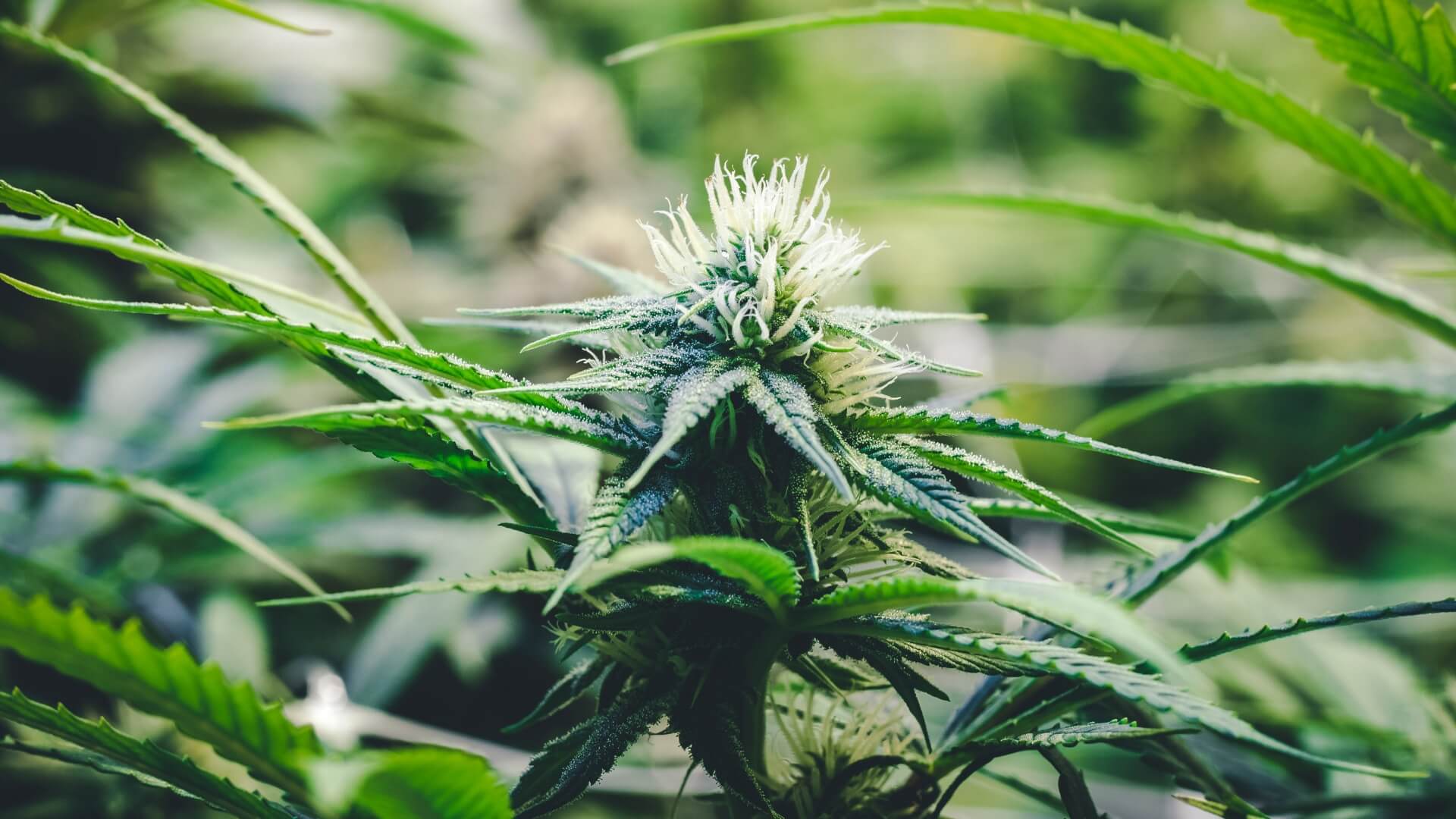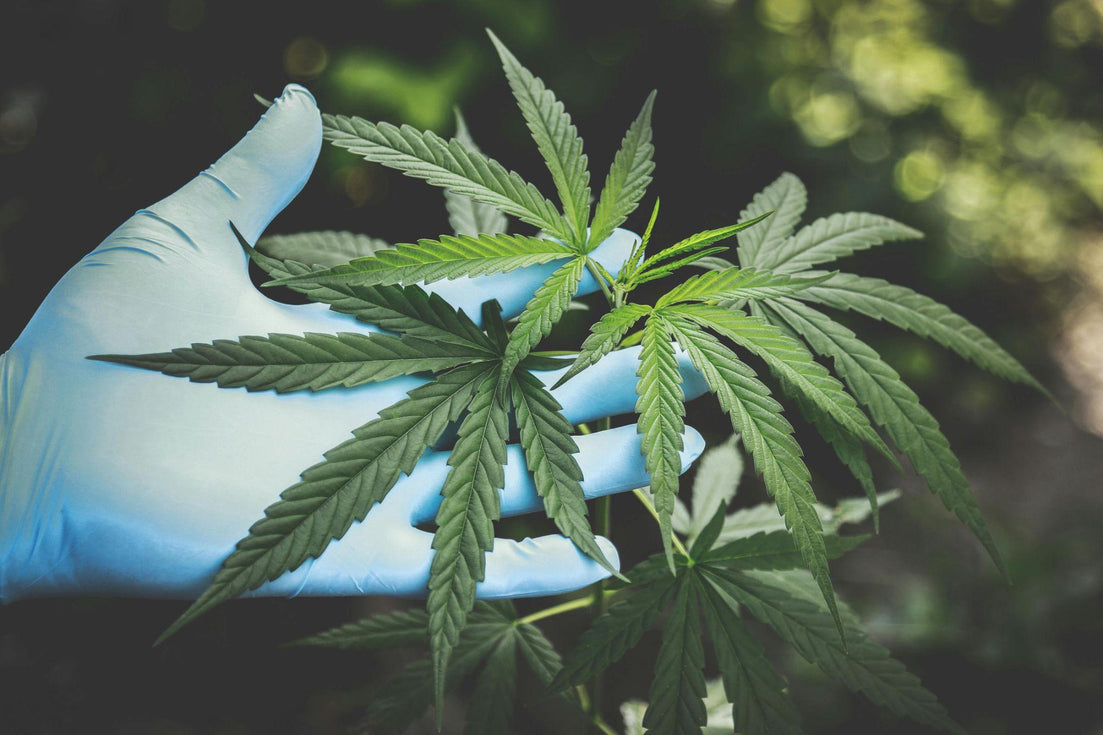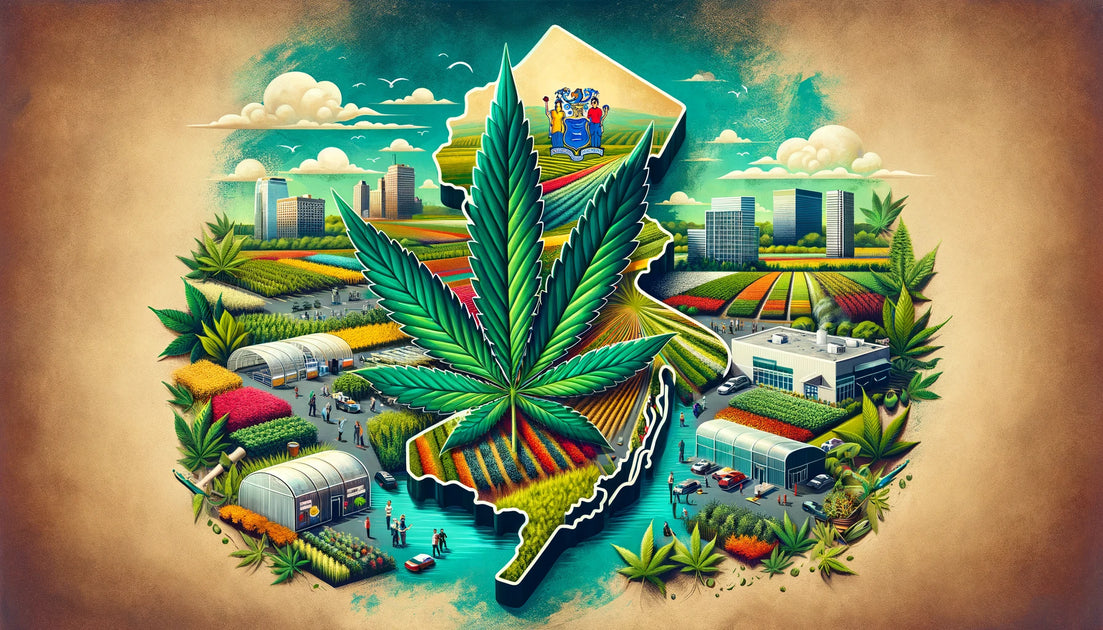Your cart is currently empty.

Tetrahydrocannabinolic Acid (THCA) might not roll off the tongue as easily as THC, but this compound holds a wealth of potential that is waiting to be tapped. Found in raw and live cannabis, THCA is a precursor to the more well-known psychoactive compound, THC. The fascinating journey of THCA into THC involves heat and time, a process known as decarboxylation.
Although they may sound similar, there's a crucial difference between THCA and THC. While THCA is a non-intoxicating compound in its raw form, when heated (like during smoking or vaping), it converts to the infamous psychoactive THC. This is why raw, unheated cannabis won't give you the 'high' commonly associated with the plant.
THCA is primarily produced in the trichomes (the resinous glands) of the cannabis plant. Its formation is a part of the plant's defense mechanism. It is a result of biosynthesis where cannabigerol acid (CBGA), the so-called 'mother of all cannabinoids,' converts into THCA, among other cannabinoids.

Understanding the Benefits of THCA
As we move beyond the well-trodden path of THC and CBD, the potential therapeutic benefits of other cannabinoids like THCA are beginning to emerge. Although THCA does not bind directly with CB1 receptors in the brain to produce psychoactive effects, it interacts with other biological targets in our body, suggesting a wide array of possible health benefits.
Therapeutic Properties of THCA
Unlike THC, THCA doesn't cause a euphoric high. However, it does have several attributes that make it a worthy contender for therapeutic applications. Some of these properties include anti-inflammatory, neuroprotective, and anti-emetic (anti-nausea) effects.
Potential Medical Applications of THCA
Preclinical studies suggest that THCA could potentially be used to manage a variety of conditions. Some preliminary research points to the role of THCA in pain management, treating neurodegenerative diseases, and reducing nausea and appetite loss. However, it's worth noting that more rigorous, controlled human studies are needed to confirm these effects.
THCA and Neuroprotection
THCA's role in neuroprotection is particularly intriguing. Early research suggests that THCA could potentially play a role in slowing the progression of neurodegenerative diseases like Parkinson's and Alzheimer's. Its interaction with PPARγ, a receptor involved in regulating neuroinflammation, hints at the potential for THCA in these applications.
THCA and Anti-Inflammatory Effects
Inflammation is a natural defense mechanism of our body, but when it becomes chronic, it can lead to various health problems. THCA's potent anti-inflammatory property comes from its ability to inhibit COX-1 and COX-2 enzymes, much like non-steroidal anti-inflammatory drugs (NSAIDs), but without the accompanying side effects. This makes THCA a promising candidate for managing inflammatory conditions.

Exploring the Role of THCA in Cannabis Cultivation
Just as THC and CBD have drawn the attention of cultivators and consumers alike, THCA is also becoming an essential factor to consider in cannabis cultivation. Understanding how to maximize the content of this compound could open the door to new cannabis varieties and applications.
THCA in Different Cannabis Varieties
It's important to note that THCA is found in varying quantities across different cannabis strains. While THC-dominant strains typically have higher levels of THCA in their raw form, CBD-dominant strains might contain less. This is an area of ongoing research, with breeders continually developing new strains to maximize desired cannabinoids.
Factors Affecting THCA Content in Plants
Several factors can influence the THCA content in a cannabis plant. One primary factor is genetic – certain strains are naturally predisposed to produce more THCA. Environmental conditions also play a significant role. Light, temperature, soil composition, and nutrient availability can all affect cannabinoid synthesis, including THCA. Lastly, the timing of harvest and post-harvest processing methods can also impact the final THCA content.
Optimal Cultivation Techniques to Maximize THCA Levels
Cultivating cannabis to maximize THCA involves a careful balance of optimal growing conditions, selecting the right strains, and harvesting at the right time.
Choose THCA-Rich Strains: Start with a strain known to be high in THCA. Consulting with a reputable seed bank or nursery can help identify the best options.
Provide Adequate Light and Optimal Temperature: Photosynthesis is critical to cannabinoid production. Ensure your plants receive enough light, and maintain a temperature between 70-85°F (20-30°C) for the best results.
Monitor Soil Health: Use well-draining, nutrient-rich soil. Regular soil testing can help identify and address any nutrient deficiencies.
Harvest at the Right Time: Monitor your plants closely as they flower. Trichomes, the tiny resin-filled glands where THCA is produced, change color as they mature, usually from clear to milky white, then amber. Peak cannabinoid production, including THCA, typically occurs when most trichomes have turned milky white.
Proper Post-Harvest Processing: To preserve THCA, avoid heat and excessive light exposure. These factors can accelerate the decarboxylation process, converting THCA into THC.
By exploring the role of THCA in cultivation, we can pave the way for future innovations in cannabis farming and product development. As our understanding of this unique cannabinoid continues to grow, so does its potential to shape the future of the cannabis industry.

Methods of Extracting THCA
Once you've successfully cultivated your high-THCA cannabis, the next step is extraction. This process isolates THCA from the plant, allowing for its use in various applications, from wellness products to potent concentrates.
Solvent-based Extraction Methods
Solvent-based extraction is one of the most common methods used to isolate THCA from the cannabis plant. These processes involve using a solvent, such as ethanol, butane, or CO2, to dissolve the cannabinoid-rich trichome resin from the plant matter.
Ethanol Extraction: This method involves soaking the plant matter in ethanol to extract the cannabinoids. The solution is then evaporated, leaving behind the extracted compounds. Ethanol extraction can be efficient and effective but may pull more chlorophyll from the plant, affecting the taste and color of the end product.
Butane or Propane Extraction: Also known as Butane Hash Oil (BHO) or Propane Hash Oil (PHO) extraction, these methods use these hydrocarbon gasses to dissolve the cannabinoids from the plant. This can result in highly potent extracts but requires careful handling and professional equipment due to the flammable nature of these solvents.
CO2 Extraction: Using supercritical CO2 as a solvent is a more complex and costly method but results in a clean, high-quality extract. The advantage of this method is that CO2 is tunable, allowing for selective extraction of desired compounds.
Solventless Extraction Methods
For those seeking a more natural approach, solventless methods are also available. These methods use physical means, rather than chemical solvents, to extract the cannabinoids.
Heat and Pressure (Rosin Technique): The rosin technique uses heat and pressure to squeeze the cannabinoid-rich resin from the plant matter. This method is simple, safe, and can produce high-quality, potent extracts without the need for solvents.
Ice Water Extraction: Also known as bubble hash, this method uses ice and water to separate the trichomes from the plant. The mixture is then filtered, and the residue is collected and dried.
Pros and Cons of Different Extraction Techniques
Each extraction method has its pros and cons, and the best choice for you will depend on your specific needs and capabilities.
Solvent-based Methods: These methods can produce potent, high-quality THCa extracts and are scalable for commercial production. However, they require professional equipment, and careful handling and may leave trace amounts of solvents in the final product if not properly purged.
Solventless Methods: These methods are more natural and eliminate the risk of residual solvents. They are also more accessible for home producers. However, they may not yield as much product, and the quality can vary based on the skill and techniques used.
Ultimately, when sourced from high-quality providers, both extraction methods produce incredible THCA extracts.

THCA Consumption Methods
Now that we've highlighted the benefits of THCA, let's expand upon how you can incorporate this cannabinoid into your cannabis regimen. From juicing raw cannabis to smoking and vaporizing to infusing it into edibles and topicals, you have a wealth of options at your disposal. Here are some of the more specific methods and products.
Raw Cannabis Juicing
Perhaps the most straightforward way to consume THCA is through juicing raw cannabis. In this method, fresh, unheated cannabis is juiced and consumed, providing a non-intoxicating dose of THCA along with other cannabinoids and plant compounds. Keep in mind, the taste of raw cannabis can be quite strong and might take some getting used to. You can mix it with other fruits and veggies in a blender to make the flavor more palatable.
Decarboxylation and Activation of THCA
While consuming raw cannabis can provide the benefits of THCA, some people may want to activate the THC. This process, called decarboxylation, involves heating the cannabis to convert THCA into THC. The most common method is baking the cannabis in the oven before using it in recipes or infusions. However, remember that THC will produce a psychoactive effect, so consume responsibly and be aware of your tolerance levels.
Smoking and Vaporizing THCA-rich Strains
If you're looking to enjoy THCA in its decarboxylated form (THC), smoking or vaporizing are the most common methods. As heat is applied, THCA in the cannabis flower is instantly converted into THC. Just ensure that the strain you're using is high in THCA content.
Pre-rolls and flowers from high-THCA cannabis strains provide an easy and familiar method of consumption. When you smoke these products, the heat causes decarboxylation, converting THCA into THC. However, some THCA may still remain, especially if the cannabis is not fully combusted.
Infusing THCA into Edibles and Topicals
THCA can also be incorporated into edibles and topicals. For edibles, you can infuse it into oil, butter, or alcohol, and then use that infusion in your favorite recipes. For topicals, THCA can be infused into creams, salves, or lotions, and then applied directly to the skin for localized relief.
Exploring the Entourage Effect with THCA
A key concept in understanding the therapeutic benefits of cannabinoids, including THCA, is the so-called "Entourage Effect." It's a principle that explains how the myriad of compounds in cannabis work together to produce enhanced effects compared to any single compound alone.
The Entourage Effect: An Overview
The Entourage Effect is a theory that the various compounds in cannabis — including cannabinoids, terpenes, and flavonoids — interact synergistically, enhancing their individual effects and offering a more comprehensive range of benefits. This theory challenges the traditional pharmacological perspective of 'one active ingredient, one target,' providing a more holistic view of cannabis' medicinal potential.
Synergistic Interactions between THCA and Other Compounds
While most research into the Entourage Effect has focused on THC and CBD, emerging evidence suggests that other cannabinoids like THCA may also play a role in this synergy. For example, the combination of THCA with CBD has shown enhanced anti-inflammatory effects in some studies.
Furthermore, the interplay between THCA and terpenes, the aromatic compounds responsible for cannabis' distinctive aroma, could potentially enhance its therapeutic potential. Certain terpenes are believed to promote relaxation, stress relief, and other health benefits. When combined with THCA, these effects could potentially be amplified.
THCA's Role in Enhancing the Entourage Effect
THCA's non-psychoactive properties make it an appealing candidate for contributing to the Entourage Effect. By interacting with other cannabinoids and terpenes without causing a high, THCA could potentially enhance the therapeutic properties of a cannabis strain while minimizing potential adverse effects associated with THC.

Conclusion
THCA is a fascinating compound with promising therapeutic potential. As a non-psychoactive cannabinoid, it provides a unique set of benefits, from anti-inflammatory to neuroprotective effects. Moreover, it plays a crucial role in the cannabis plant's life cycle and cultivation and is an essential component in the Entourage Effect.
The exploration of THCA is part of a broader movement to understand and appreciate the full range of cannabinoids present in cannabis. As the industry continues to evolve, and our knowledge deepens, the promise of less-known cannabinoids like THCA is becoming more apparent. It's an exciting time for cannabis science, and we look forward to unearthing more secrets about this fascinating plant.



